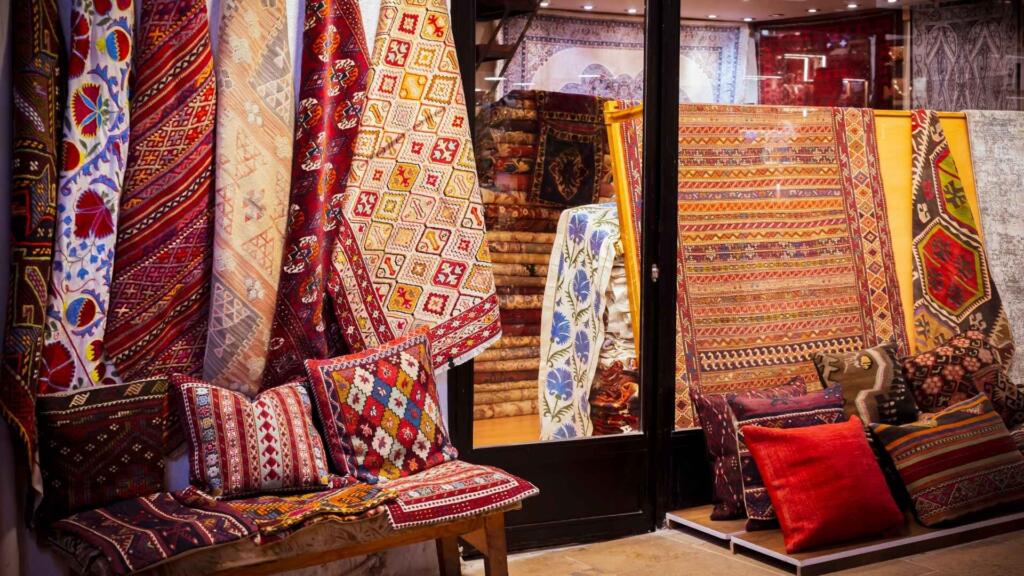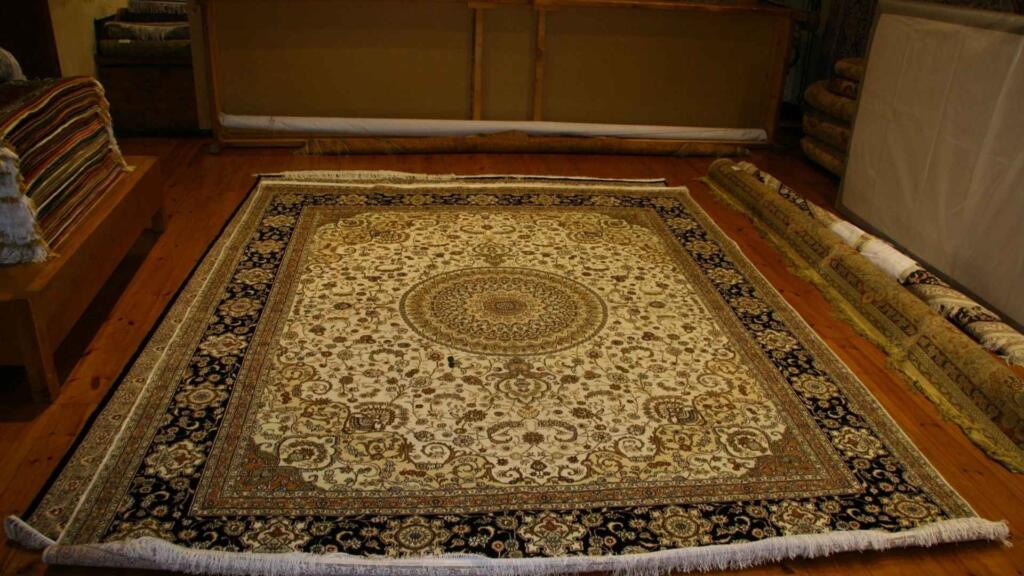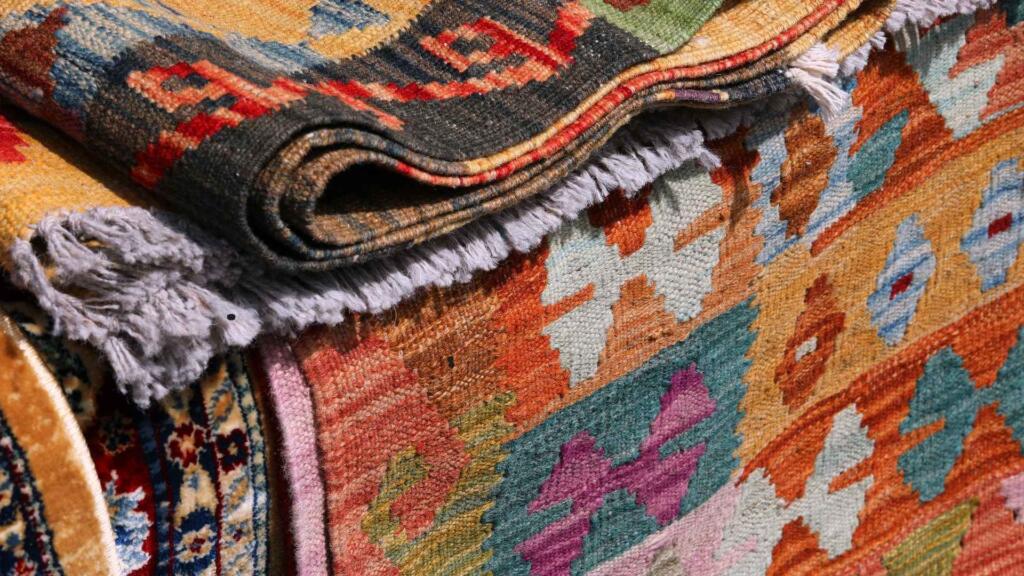
E-commerce has significantly transformed how people shop, including for home goods like rugs. Traditionally, rug shopping was a tactile experience—consumers would visit local stores, feel the texture, and inspect the colors in person. However, with the rise of e-commerce, the rug industry has adapted to meet changing consumer behaviors. In this article, we’ll explore the impact of e-commerce on rug sales and distribution, the benefits it has brought to both consumers and sellers, and the challenges faced along the way.
1. Growth in Online Rug Sales

The rug market has experienced notable growth due to e-commerce. As more consumers embrace online shopping, rug sales have shifted from physical stores to digital platforms. According to a study by Statista, the global online home decor market, which includes rugs, was valued at over $98 billion in 2020. It is projected to reach $202 billion by 2024, with much of this growth driven by the convenience and variety offered by e-commerce platforms.
Major online retailers like Amazon, Wayfair, and even specialized rug e-commerce stores have played pivotal roles in making rugs more accessible to consumers worldwide. The accessibility and convenience of purchasing rugs online have contributed to the expansion of the market, bringing in new buyers who might not have considered purchasing a rug in a physical store.
2. Convenience and Variety

One of the key benefits of e-commerce in the rug industry is the convenience it offers to shoppers. With the ability to browse hundreds of designs, colors, and sizes from the comfort of home, consumers no longer have to visit multiple stores to find the perfect rug. Online retailers often provide advanced search filters, allowing shoppers to narrow their options based on material, style, color, and price.
This vast selection is not always available in physical stores, where display space is limited. Online stores can list far more inventory, which allows consumers to explore unique and rare designs from different parts of the world. For instance, handmade Persian rugs, which might only be available in niche stores in major cities, are now just a click away for consumers living in any part of the world.
3. Virtual Tools for Enhanced Shopping Experience

One of the biggest challenges with purchasing rugs online is that buyers can’t physically touch the product or see how it fits into their space. To overcome this, many e-commerce platforms have developed innovative virtual tools to improve the online shopping experience. Features like augmented reality (AR) allow customers to visualize how a rug will look in their home by digitally placing the rug in their room through their phone or computer screens.
Additionally, high-quality images, detailed product descriptions, and customer reviews help online shoppers make informed decisions. These virtual tools help bridge the gap between the tactile experience of a physical store and the convenience of online shopping, ultimately increasing consumer confidence in purchasing rugs online.
4. Changes in Distribution Channels

The rise of e-commerce has also changed how rugs are distributed. Traditionally, rugs were sold through local brick-and-mortar stores or wholesalers. Today, online rug retailers often work directly with manufacturers or artisans, cutting out intermediaries and reducing the overall cost. This shift has allowed businesses to offer rugs at more competitive prices while maintaining healthy profit margins.
Moreover, logistics and fulfillment have become more sophisticated with the growth of e-commerce. Many companies offer free shipping and returns, which have become expected standards for online shoppers. Fast and efficient delivery services, paired with liberal return policies, have significantly contributed to the rise of rug sales online. This is especially important for large items like rugs, which can be costly and difficult to ship.
5. Sustainability and Ethical Concerns

E-commerce has also brought to light important ethical and sustainability issues in the rug industry. Consumers are becoming more conscious of the environmental and social impacts of their purchases, and many e-commerce platforms have responded by offering sustainably sourced and ethically made rugs. Brands that focus on fair-trade practices, eco-friendly materials, and the well-being of artisans are gaining popularity.
For example, companies like Ruggable and Revival Rugs emphasize sustainability by offering washable rugs, using recycled materials, and ensuring that artisans are fairly compensated. The rise of these ethical brands demonstrates how e-commerce platforms can cater to consumers’ changing preferences, driving growth in socially responsible rug sales.
6. Challenges Faced by Rug Sellers

Despite the many benefits of e-commerce, selling rugs online comes with its own set of challenges. One of the primary obstacles is the high return rate. Because customers can’t see or touch the product before buying, they may find that the rug doesn’t meet their expectations in terms of color, size, or texture. This has led to a higher return rate for online rug purchases compared to in-store purchases. According to a report by Shopify, return rates for e-commerce sales in home goods, including rugs, can reach up to 20%.
Additionally, the logistics of shipping large, heavy rugs can be complex and expensive. Shipping costs can eat into profit margins, and ensuring that products arrive in perfect condition adds another layer of complexity to the distribution process. Sellers also face fierce competition from larger online marketplaces like Amazon, where consumers often expect the lowest possible prices.
7. The Role of Social Media and Influencers

E-commerce has allowed rug sellers to leverage social media and influencer marketing in new ways. Platforms like Instagram and Pinterest have become powerful tools for showcasing beautifully styled rooms that feature rugs as key design elements. Many consumers find inspiration for home decor on these platforms, and influencers often promote specific rug brands or designs, helping drive sales.
Social media also enables sellers to engage with customers, answer questions, and build brand loyalty in a more personal way. By sharing customer photos and providing styling tips, rug sellers can create a sense of community around their products, encouraging repeat purchases and word-of-mouth marketing.
8. Future Trends in E-commerce and Rug Sales

As e-commerce continues to evolve, several trends are likely to shape the future of the rug industry. One such trend is the growing use of artificial intelligence (AI) in online shopping. AI-powered recommendation systems can suggest rugs based on a customer’s past purchases or browsing behavior, creating a more personalized shopping experience.
Additionally, the rise of eco-conscious consumers will continue to push brands toward sustainable and ethical production practices. As more consumers prioritize the environment and social responsibility, companies that align with these values will likely thrive in the e-commerce space.
Finally, technological advancements in virtual reality (VR) and augmented reality (AR) will further improve the online shopping experience, making it easier for customers to visualize and customize rugs in their spaces. This will likely drive more consumers to shop for rugs online rather than in physical stores.
Conclusion
E-commerce has dramatically changed the rug sales and distribution landscape. It has made it easier for consumers to access a wide variety of rugs, provided convenience through online shopping tools, and introduced new distribution methods that benefit both buyers and sellers. While challenges like high return rates and logistics remain, the future looks bright for online rug sales, especially as technology continues to enhance the customer experience.
As e-commerce continues to grow, businesses in the rug industry must adapt to these changes by offering unique designs, ethical sourcing, and seamless online shopping experiences. By doing so, they can capitalize on the increasing demand for rugs in the digital marketplace.
References:
- Statista, “Global Online Home Decor Market,” 2020.
- Shopify, “E-commerce Return Rates,” 2022.
- Revival Rugs, “Our Commitment to Sustainability,” 2023.
- Ruggable, “Sustainable and Washable Rugs,” 2023.



